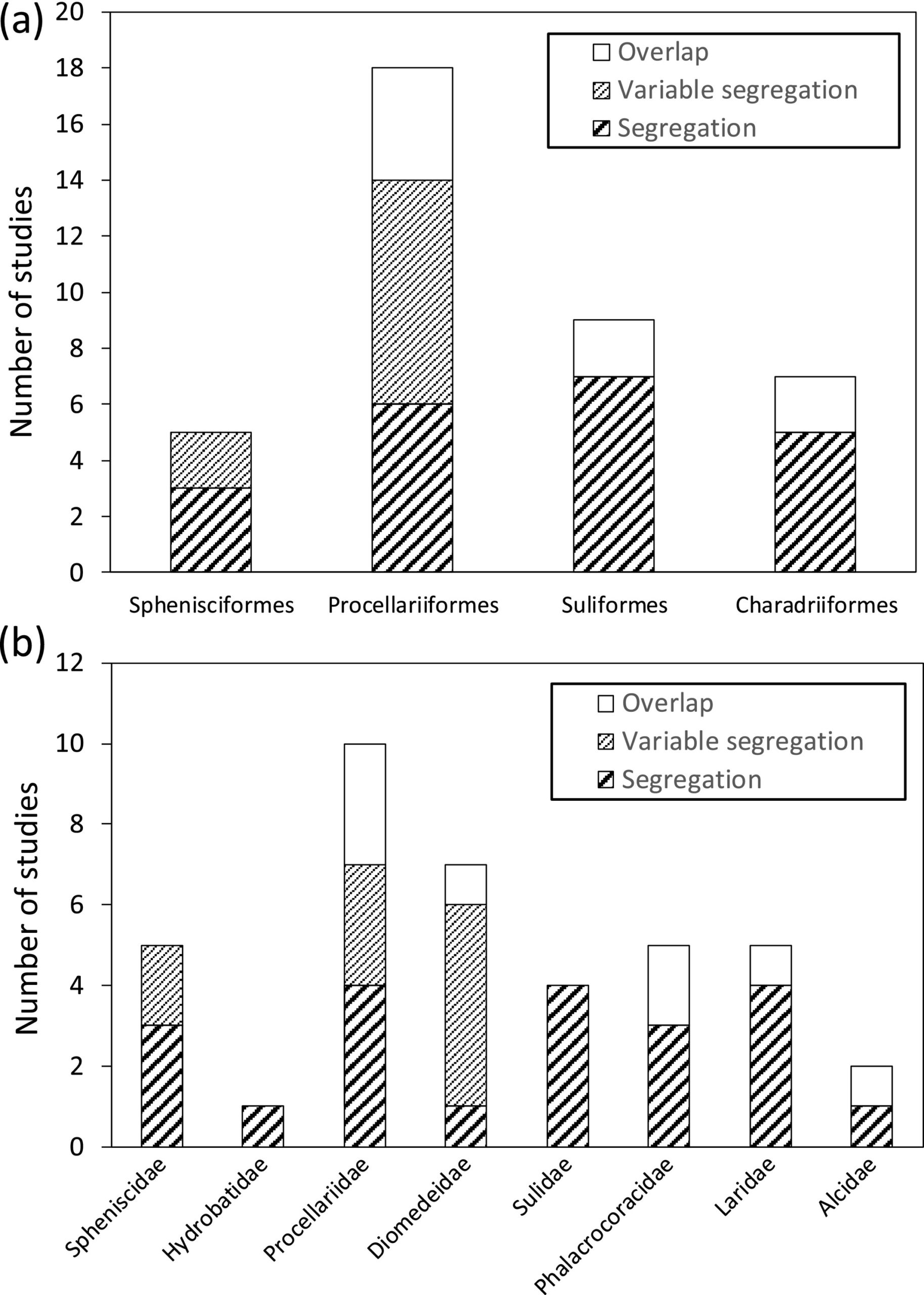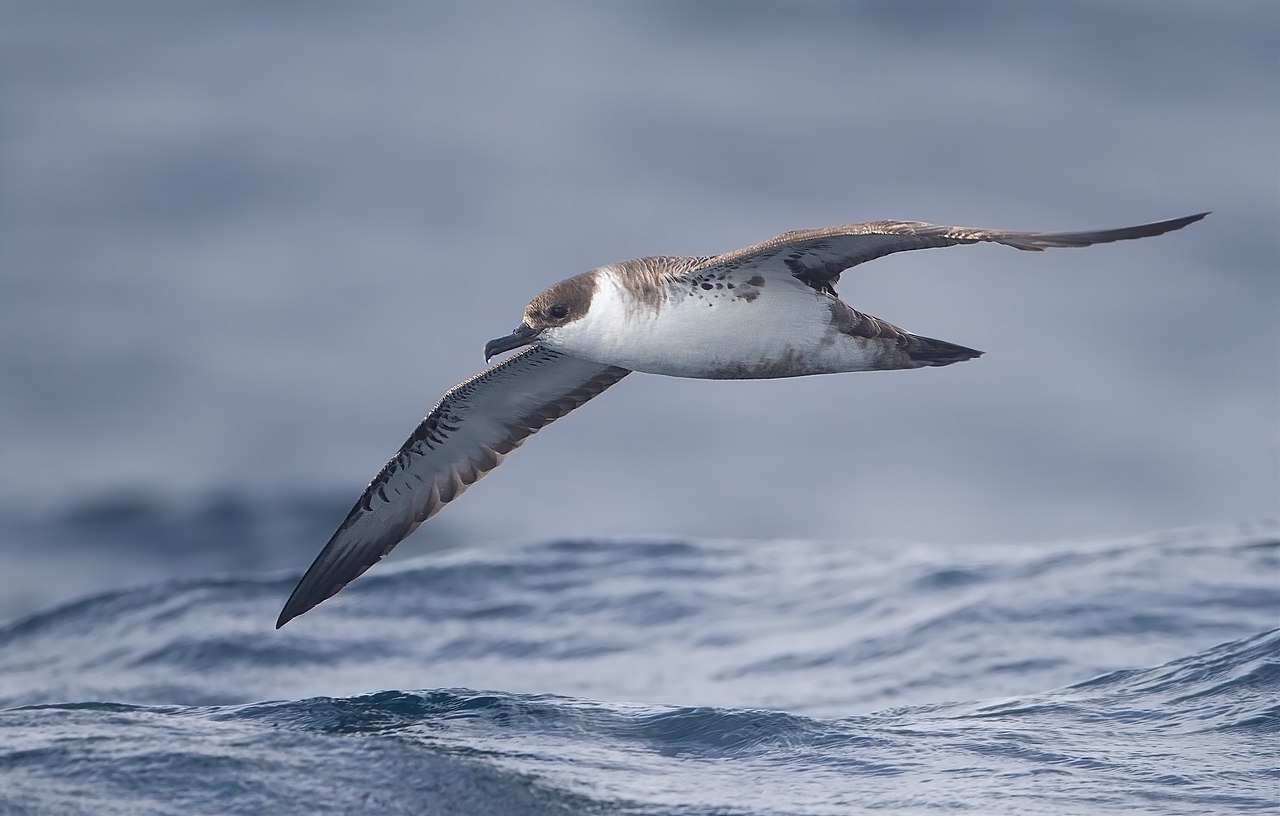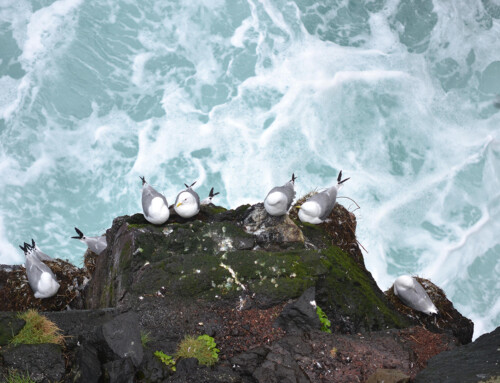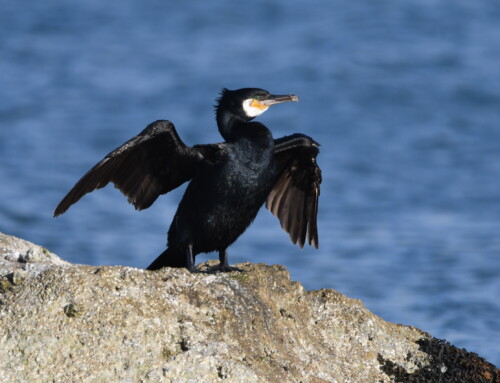LINKED PAPER
A review of the occurrence of inter-colony segregation of seabird foraging areas and the implications for marine environmental impact assessment. Bolton, M., Conolly, G., Carroll, M., Wakefield, E.D. & Caldow R. 2019. IBIS. DOI: 10.1111/ibi.12677 VIEW
The number of seabirds is declining rapidly (Croxall et al. 2012). Marine environments are heavily impacted by human activities, threatening numerous seabird colonies. Several countries are conducting environmental impact assessments (EIAs) to pinpoint marine areas that need protection. These assessments often simplify the dynamics of seabird colonies, such as the assumption that neighboring colonies overlap in foraging areas. But this need not be the case. Adjacent colonies might show segregation in foraging locations when competition is high. A recent review paper dove into the scientific literature to quantify how common the segregation of foraging areas is among seabird colonies. The findings of this study can have important implications for the implementation conservation strategies.
Colony size
The literature search uncovered 39 studies of which the majority (79 percent) presented evidence for segregation of seabird foraging areas. The probability of segregation is determined by several factors as predicted by the density-dependent hinterland model (DDH), a theoretical framework to understand the foraging behavior of seabirds (Wakefield et al. 2013). Colony size and location affect the level of competition between neighboring colonies, potentially culminating in segregation. For example, a study on one large and three small colonies of Adélie Penguins (Pygoscelis adeliae) in Antarctic waters showed that the foraging locations of the small colonies rarely overlapped with the foraging area of the large colony. Moreover, as the foraging area of the larger colony increased, the birds from the smaller colonies shifted their foraging locations to avoid competition with the larger colony (Ainley et al. 2004).

Figure 1 The literature search revealed that segregation of foraging areas is a common phenomenon in several orders of seabirds.
Prey distribution
The habitat structure surrounding the colonies also influences competition dynamics. Colonies situated close to the mainland or within bays have less foraging habitat available compared to colonies on distant oceanic islands (Wakefield et al. 2017). A related factor is prey distribution: if the preferred prey is distributed in small patches, there might be fierce competition for the foraging locations, leading to segregation. Alternatively, when prey is abundant, the segregation might temporarily break down, allowing birds from various colonies to forage in the same location. The effect of prey distribution on segregation is nicely illustrated by Cory’s Shearwaters (Calonectris borealis): six colonies used different foraging areas for most of the time, but this segregation broke down in high-productivity areas with plenty of prey (Ramos et al. 2013).
Marine protected areas
These studies indicate that segregation of foraging areas is more widespread than previously appreciated. This finding has important implications for the management and creation of protected marine areas. The authors indicate that “the assumption of non-interacting, overlapping colony foraging distributions that underpins the current, widely used approaches to apportionment of the potential impacts of marine developments to seabird colonies in the UK appears unrealistic in many situations.” Hence, thorough research on the foraging dynamics of neighboring seabird colonies is essential to take proper conservation actions and ensure the protection of these colonies and their foraging areas.
References
Ainley, D.G., Ribic, C.A., Ballard, G., Heath, S., Gaffney, I., Karl, B.J., Barton, K.J., Wilson, P.R. & Webb, S. (2004). Geographic structure of Adélie Penguin populations: overlap in colony‐specific foraging areas. Ecological Monographs 74: 159– 178. VIEW
Croxall, J.P., Butchart, S.H.M., Lascelles, B., Stattersfield, A.J., Sullivan, B.J., Symes, A. & Taylor, P. (2012). Seabird conservation status, threats and priority actions: a global assessment. Bird Conservation International 22: 1– 34. VIEW
Ramos, R., Granadeiro, J.P., Rodríguez, B., Navarro, J., Paiva, V.H., Bécares, J., Reyes‐González, J.M., Fagundes, I., Ruiz, A., Arcos, P., González‐Solís, J. & Catry, P. (2013). Meta‐population feeding grounds of Cory’s Shearwater in the subtropical Atlantic Ocean: implications for the definition of Marine Protected Areas based on tracking studies. Diversity and Distributions 19: 1284– 1298. VIEW
Wakefield, E.D., Bodey, T.W., Bearhop, S., Blackburn, J., Colhoun, K., Davies, R., Dwyer, R.G., Green, J.A., Grémillet, D., Jackson, A.L., Jessopp, M.J., Kane, A., Langston, R.H.W., Lescroël, A., Murray, S., Le Nuz, M., Patrick, S.C., Péron, C., Soanes, L.M., Wanless, S., Votier, S.C. & Hamer, K.C. (2013). Space partitioning without territoriality in gannets. Science 341: 68– 70. VIEW
Wakefield, E.D., Owen, E., Baer, J., Carroll, M.J., Daunt, F., Dodd, S.G., Green, J.A., Guilford, T., Mavor, R.A., Miller, P.I., Newell, M.A., Newton, S.F., Robertson, G.S., Shoji, A., Soanes, L.M., Votier, S.C., Wanless, S. & Bolton, M. (2017). Breeding density, fine‐scale tracking and large‐scale modeling reveal the regional distribution of four seabird species. Ecological Applications 27: 2074– 2091. VIEW
Image credits
Featured image: Great Shearwater Puffinus gravis | JJ Harrison | CC BY-SA 3.0 Wikimedia Commons





